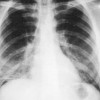Human immunodeficiency virus infection in hemophilic children
Abstract
The following groups were compared: (1) children less than 18 years old who have hemophilia-associated acquired immunodeficiency syndrome (AIDS) with other children with AIDS and with adults who have hemophilia-associated AIDS and (2) asymptomatic HIV-infected hemophilic children with asymptomatic HIV-infected hemophilic adults.… Read more

